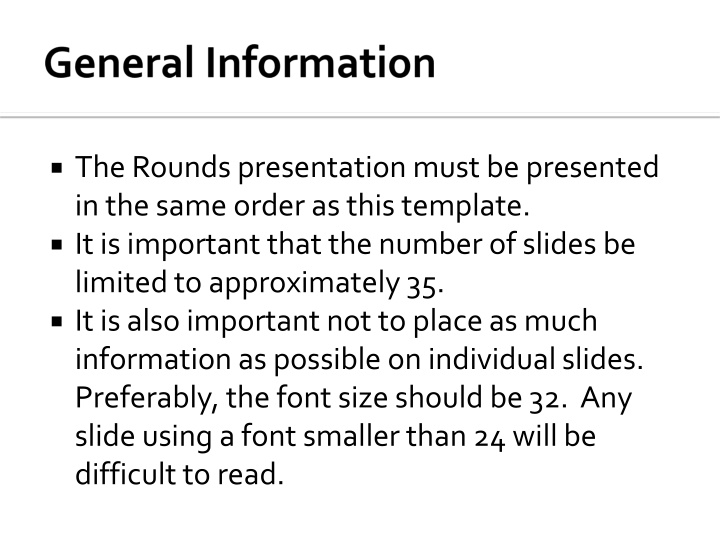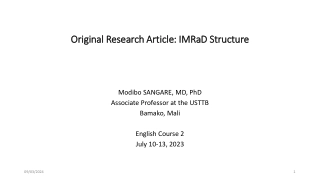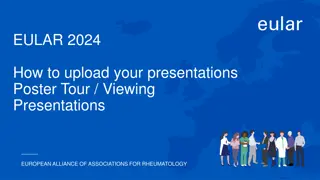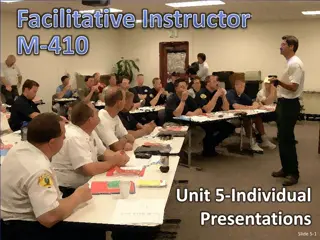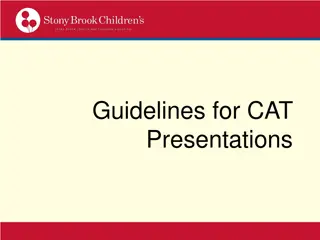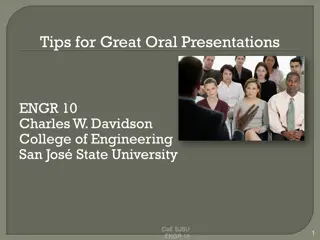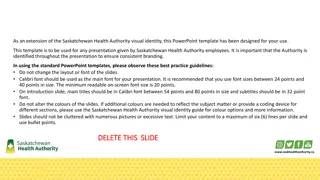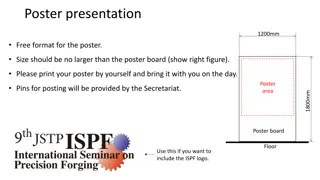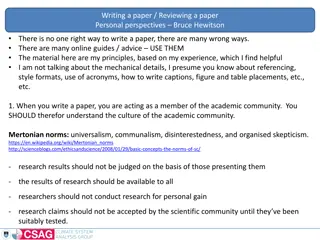Guidelines for Structuring Effective Presentations
When preparing a presentation, it's crucial to follow a structured approach to ensure clarity and coherence. This involves limiting the number of slides, using an appropriate font size, selecting readable typefaces, and focusing on key information per slide. The order, design, and timing of the presentation play essential roles in engaging the audience effectively and facilitating discussions. Additionally, including details such as patient backgrounds, medical and dental histories, and radiographs should be done strategically to support the main points of the presentation.
Uploaded on Sep 11, 2024 | 0 Views
Download Presentation

Please find below an Image/Link to download the presentation.
The content on the website is provided AS IS for your information and personal use only. It may not be sold, licensed, or shared on other websites without obtaining consent from the author.If you encounter any issues during the download, it is possible that the publisher has removed the file from their server.
You are allowed to download the files provided on this website for personal or commercial use, subject to the condition that they are used lawfully. All files are the property of their respective owners.
The content on the website is provided AS IS for your information and personal use only. It may not be sold, licensed, or shared on other websites without obtaining consent from the author.
E N D
Presentation Transcript
The Rounds presentation must be presented in the same order as this template. It is important that the number of slides be limited to approximately 35. It is also important not to place as much information as possible on individual slides. Preferably, the font size should be 32. Any slide using a font smaller than 24 will be difficult to read.
It is not a requirement that presentations be made in black and white; however, a chosen design should not distract (detract) from the presentation. The easiest typeface to read are sans serif fonts, that is, without serifs. For example, Times New Roman is a serif typeface while Arial, Corbel and Lucida Sansare sans serif typefaces.
Generally the D1 and D2 will have 5 minutes each for discussing their portions of the presentation. D3 students should prepare for a 10 minute presentation D4 students should also prepare for a 10 minute discussion 30 minutes of student presentation will be followed by 20 minutes of discussion.
Group Leader: Dr. Specialty Leader: Dr. Project Team Leader: D4 Project Team Participants: D1; D2; D3
1 or 2 slides on patient background to include, but not limited to, sex, age, race and chief complaint
BWX and periapical radiographs Although all BWX and periapical radiographs could be placed on this slide it will be hard to read. Recommendation would be to include only those necessary for the discussion or to have the image zoom up for closer inspection.
Ensure that the periodontal charting is readable.
Only those necessary to demonstrate or support Rounds discussion
1 slide D1 Topic: Discussion: Resources:
1 slide D2 Question: Discussion: Resources:
P: I: C: O:
Date(s) of Search: Database(s) Used: Search Strategy/Keywords:
Authors, Title, Journal, Date, Volume, Page Numbers. Study Design:
Authors, Title, Journal, Date, Volume, Page Numbers. Study Design:
1a Systematic Review of Randomized Control Trials (RCT S) 1b Individual RCT 2a Systematic Review of Cohort Studies 2b Individual Cohort Study 2c Outcomes Research, Ecologic Studies 3a Systematic Review of Case Control Studies 3b Individual Case Control Study 4 Case Series (and poor quality cohort and case control studies) 5 Expert Opinion without explicit critical appraisal, or based on physiology/bench research Double click table to activate check-boxes
A Consistent, good quality patient oriented evidence B Inconsistent or limited quality patient oriented evidence C Consensus, disease oriented evidence, usual practice, expert opinion, or case series for studies of diagnosis, treatment, prevention, or screening Double click table to activate check-boxes
May be from Group Leader and non- presenting members of Group
